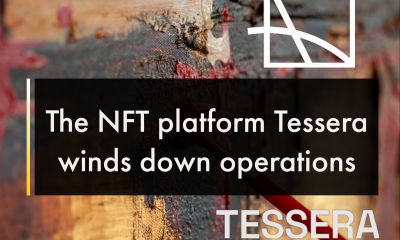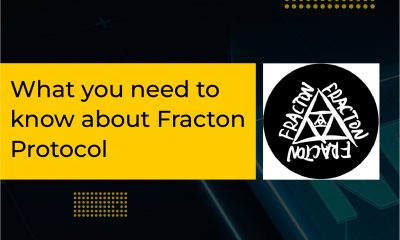Education
NFT Fractionalization: what you should know about Tessera

NFTs are a part of the decentralized crypto ethos with a lot of utilities such as play to earn games, virtual certifications, ownership of digital art, and access to premium community events like VeeCon. However, there are a top list of NFTs – such as Bored Ape Yacht Club, Cryptopunk, Mutant Ape – that are expensive making it hard for users to own them.
In order to solve this problem, NFT fractionalization was introduced to allow several individuals to pay a smaller amount of money to own a part of a Bored Ape or Mutant Ape NFT or other NFTs. One of these platforms is Tessera, formerly known as Fractional.art.
Tessera is an innovative Web3 ownership-focused project that was started by Andy Chorlian, CEO of Tessera and former Blockchain Developer at MakerDAO, and Nejc Krajnikejc, a Computer Scientist and CTO at Tessera, to encourage virtual collective ownership with people we care about. It was initiated in 2021 and continues to expand.
Tessera is a Web3 platform created to foster ownership of digital assets using the force of the community. This means that individuals can combine their NFTs and other crypto assets to control and share governance of digital assets on the internet. The idea is a continuation from NFT fractionalization.
NFT fractionalization is the process of breaking down collectibles into fractions or smaller parts allowing multiple traders to buy and own a piece of the whole NFT. Fractionalization reduces the barrier of entry to owning NFTs.
For now, there are two major aspects of the Tessara platform – Vault and Rae.
How does a Rae work
A Rae, a short form of the plural Tesserae, is an NFT found in the Tessara ecosystem. The entire Tessara system does not allow any centralized person or group to control the collectibles in the Tessera Vault.
Raes are created when an NFT is transferred to a Vault. They are ERC-1155 tokens that govern a Vault. The Vault mints the NFT into a Rae and a countdown begins for the auctioning of the Raes. The features and attributes of Raes are dependent on that of NFTs sent into the Vault.
Each Rae is a digital asset that can be used as a PFP, connecting with other community members of Tessara, and can be listed on the secondary market to be sold or granted access to apply for a buyout of the entire Vault.
How does a Vault work
Vault is a part of the Tessara platform that acts as the non-custodial smart contract wallet. They are built on the blockchain with a trustless, permissionless, and decentralized architecture.
There are five stages involved in the usage of Vault on Tessara
- Phase 1: Soon™
This phase starts when the owner of an NFT transfers one or more non-fungible tokens into a Vault. After a while, a reminder is sent to the Tessara platform for all users to know when an auction of the NFT that was transferred in the Vault begins.
- Phase 2: Distribution
Immediately after the auction starts, phase 2 is initiated. Once the Distribution phase starts, users can begin to purchase Raes of their choice. The selling price of Rae is based on the Last Price Dutch Auctions system.
This phase, which can span 26 hours, ends once all Raes are bought, after which “the curator can withdraw the ETH proceeds from the primary sale minus artist royalties and the Tessera platform fee.”
- Phase 3: Secondary Marketplace
Phase 3, which starts when the Distribution phase ends, enables holders to buy and sell their Raes in the Secondary Marketplace tab within each Vault page.
- Phase 4: Reconstitution
All Vaults stay in the Secondary Marketplace phase until the owner of a Rae wants to buy out all Raes in the Vault. This is called a reconstitution attempt, the Reconstitution phase.
According to the team, all Vaults can be reconstituted at launch through Optimistic Buyouts. The details of the buyout are made public for all to see.
- Phase 5: Vault Closure
If the buyout succeeds, the buyer can claim all NFTs from the Vault while “Rae owners can burn (destroy) their Raes in exchange for their portion of the ETH from the buyout, minus a fee to Tessera.”
This means that the Secondary Marketplace for the Raes from a closed Vault, as a result of a successful buyout, ceases to exist once the reconstitution is complete.
It means that if the buyout is successful, the Vault closes. If it is not successful, the Vault remains open.
Projects launched by Tessara
Tessara has launched Nounlets and Parallel as some of its products to test the efficiency of its idea. Nounlets and Parallel, like Tessera, uses the idea of NFT fractionalization to bring several users to own a single, highly valuable NFT.
Owners of Nounlets, NFT from NounDAO, can vote on decisions made by Nouns DAO, which has a huge treasury. There are other updates Tessera promises to share along its development path, and these updates will be released intermittently on the website.
Read also;

















4 Comments